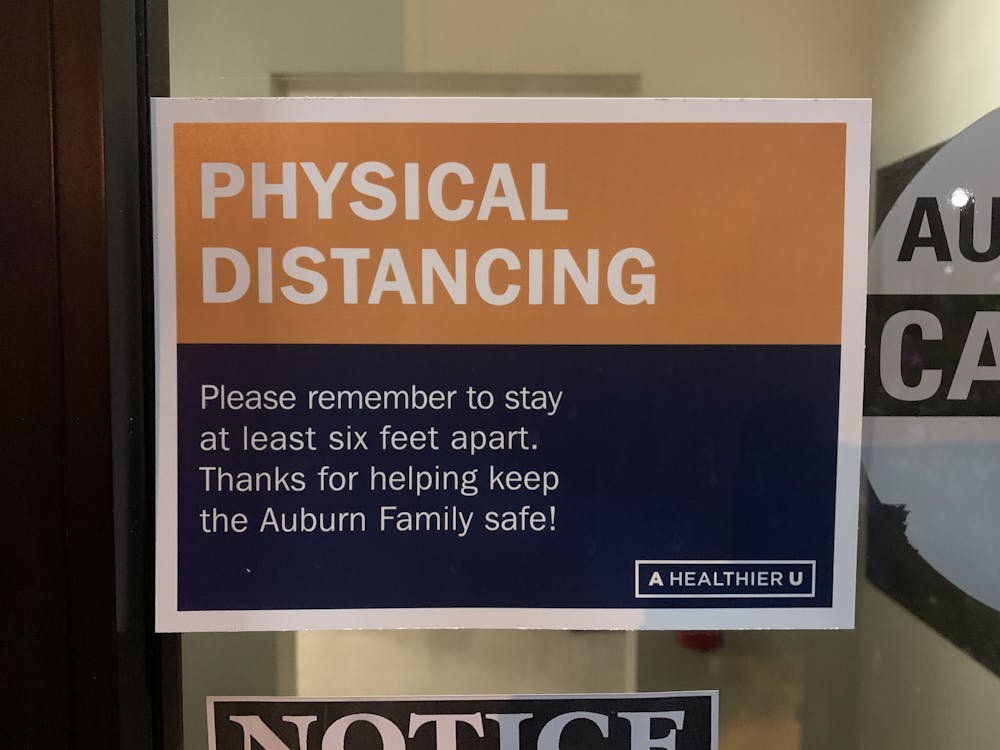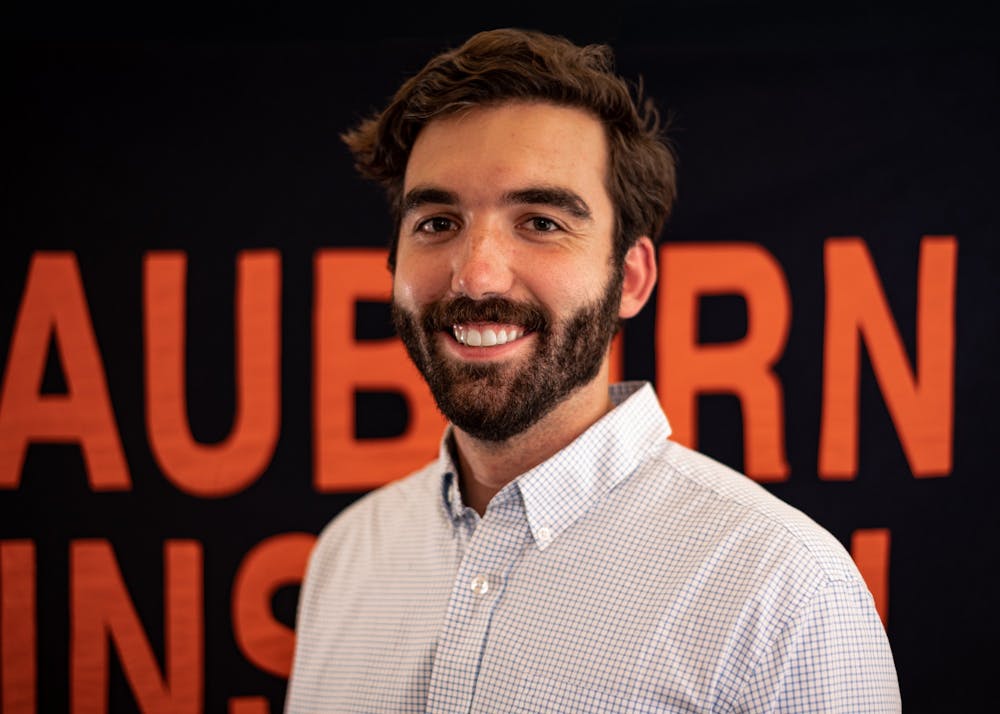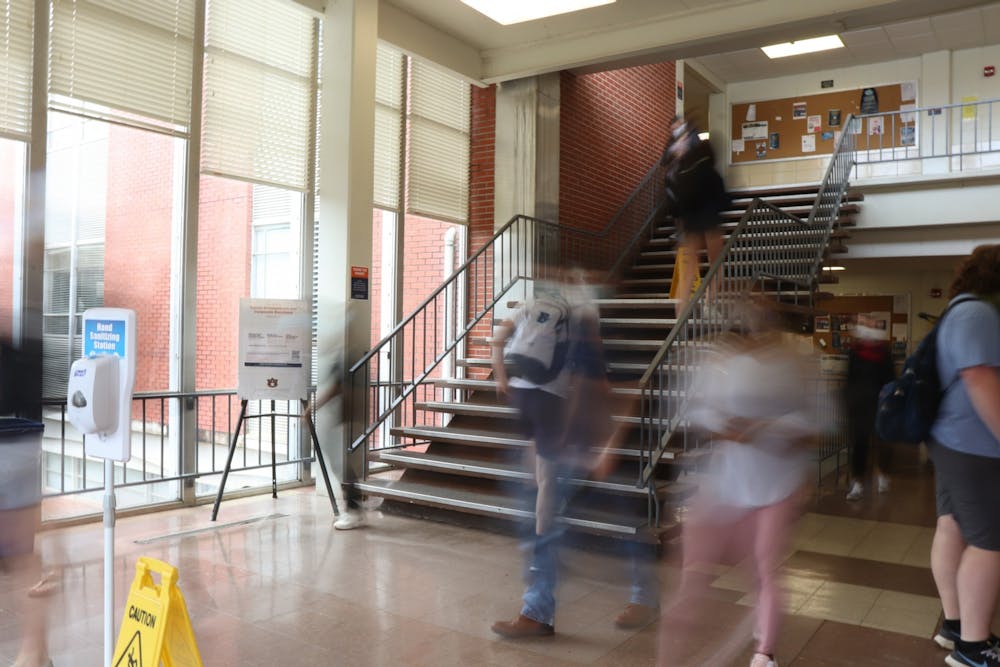Editor's Note: Some language in this article, including the headline, has been changed or added for clarity.
Auburn University conducted a series of studies in the summer and fall of 2020 to determine the capacity at which six feet of social distancing could be maintained between students in all classrooms. They didn't stick to those capacities when the time came to build schedules.
The University has instead allowed classrooms to be filled to 50% for in-person classes, at times double or triple the capacity found by the studies. Maintaining six feet of physical distancing between students is and was impossible in many face-to-face classes during the spring and fall semesters.
The University has defended the policy, claiming that no COVID-19 cases have been spread in classrooms or laboratories.
The Center for Disease Control’s guidelines for colleges says these policies define a school at “higher risk” for COVID-19 spread: “Students, faculty and staff follow some steps to protect themselves and others at all times such as proper use of face masks, social distancing and hand hygiene.” According to the CDC, six feet is the distance required between individuals for safer interaction.
Auburn seems to fall into the higher risk category, considering that it has taken other steps to prevent the spread of the virus but fails in cases to allow for social distancing in classes.
The room studies were conducted by Facilities Management starting in June 2020. Following a June 24 Senate meeting, Provost Bill Hardgrave sent a recap email to faculty saying these studies would inform scheduling for the upcoming fall semester.
“Classrooms will practice safe social distancing; a team is working on diagraming seating and/or marking classrooms,” Hardgrave said. “As we determine the class capacity, we will have to look at options like splitting sections … We will practice safe social distancing. Distancing in the classroom depends on the classroom layout.”
A review by The Plainsman of several spring 2021 face-to-face-required classes on the University's course listing shows that many of them were allowed to be filled above CDC recommendations and the University’s own capacity studies.
- English Composition I: All five face-to-face-required sections have more students than their classrooms' social-distancing capacity limits.
- English Composition II: 18 of 20 face-to-face-required sections have more students than their classrooms' social-distancing capacity limits.
- Chemistry I: All five face-to-face-required sections have more students than their classrooms' social-distancing capacity limits, two of which double it.
- World History II: All 10 face-to-face-required sections have more students than their classrooms' social-distancing capacity limits, three of which triple it.
- Calculus I: 12 of 13 face-to-face-required sections have more students than their classrooms' social-distancing capacity limits, five of which double it.
Some of these sections may, at professor's request, meet in separate groups. For example, half comes to class on Tuesday, and half comes on Thursday. This is not evidence that all of these sections met in rooms which did not allow for social distancing, but rather that the University allows classes to do so.

This sticker on Thach Hall 112 tells students to stay six feet apart, when in some classes held in it, they're unable to.
While the first of these studies were conducted on June 18, they were not completed or published online until December, and many professors were not informed of the studies’ results until even later. Alan Seals, associate professor of economics in the College of Liberal Arts, said in an email on Jan. 3 addressed to President Jay Gogue that he was never made aware of the studies nor sent a link to them, to his knowledge.
Seals also said he taught classes face-to-face in the fall in rooms he would later find out could only hold a portion of his class in what the CDC considers safe conditions.
“I also taught ‘Face‐to‐Face Required’ this past fall with enrollment of 50 in Thach 112, which according to facilities can only safely hold 27 people,” Seals wrote. “I am far from alone in my experiences in this regard.”
The University has continued with its 50% guideline for the spring semester. While maintaining six feet of distance isn't possible at half capacity in most classrooms, instructors were still told to come up with a plan of how they would do so. In a Dec. 31 email, Joseph Aistrup, dean of the College of Liberal Arts, instructed professors who chose to teach in-person to, “Provide information on how you plan to handle in‐person attendance given social distancing and classroom capacity limits.”
Seals forwarded the email to Gogue and Hardgrave on Jan. 4.
"It is apparent, based upon this email from the dean and previous correspondence from the Provost’s office, that the administration hopes to shift liability for the risks of face‐to‐face instruction, associated with the pandemic, onto the instructors, many of whom are not tenured or are still graduate students," Seals said.
Professors who chose to teach in person and wanted to maintain social distancing could contact department chairs to request a larger classroom, which Seals did before the spring semester began.
Michael Stern, associate professor of economics in the College of Liberal Arts, has spoken out against the University’s decision not to limit classes to the capacity found in the social distancing room studies, calling the 50% capacity limit “made up.” Stern said he is puzzled as to why football games at Jordan-Hare were limited to 20% of normal capacity this fall, while classes — which typically do not have the safety benefit of being held outdoors — are allowed to be filled halfway.
Stern also questioned how the University could instruct students and faculty on campus to socially distance when in many cases, it’s impossible. The message is all over Auburn’s campus as well its website — “Please remember to stay at least six feet apart.”
“There’s signs on all the doors, everywhere you go in, that say maintain six feet of social distancing, and then when you walk in the classroom it’s physically impossible for you to maintain six feet of social distancing,” Stern said.
While professors may encourage social distancing, they, in fact, cannot require students to social distance. Dr. Fred Kam, director of the Auburn University Medical Clinic, said in a January University Senate meeting that professors can require students to wear a mask but not to socially distance. The following is an abridged version of Kam and Stern’s discussion:
Stern: “A significant concern for me is the safety in our face-to-face classrooms, so I was wondering if [Kam or Gogue] could tell me if our students need to maintain six feet of social distancing while in our classrooms?”
...
Kam: “If they feel that they individually, because of their underlying circumstances, whatever that is, would like to sit six feet apart, then they should do what they can to sit six feet apart.”
...
Stern: “Am I allowed to tell them that they have to wear a mask?”
Kam: “Yes.”
Stern: “But I can’t tell them that they have to sit six feet apart from each other in the classroom?”
Kam: “That is correct, you can’t tell them that they have to, but they definitely have to wear masks.”
The University has claimed that no cases of COVID-19 have been transmitted in classrooms or laboratories at Auburn.
The provost’s office has said that the decision to limit classes to 50% was reached to “allow for physical distancing and offer faculty flexibility.”
“This policy has been in place since June 2020 and was made by the university’s leadership with input from shared governance groups and our medical experts,” said Julie Huff, assistant vice president for strategic initiatives for the provost’s office.
The provost’s office also said that the room studies were meant to provide additional information for faculty and may not account for various factors that are unique to each room.
“The capacity studies conducted by Facilities Management using the CDC considerations are meant to provide additional information for faculty to review when determining student seating,” Huff said. “These studies are linear only, meaning they do not consider various classroom features and configurations, such as room slope, students’ seating orientation, type of activity in the classroom, etc.”
Do you like this story? The Plainsman doesn't accept money from tuition or student fees, and we don't charge a subscription fee. But you can donate to support The Plainsman.

Evan Mealins, senior in philosophy and economics, is the editor-in-chief of The Auburn Plainsman.





